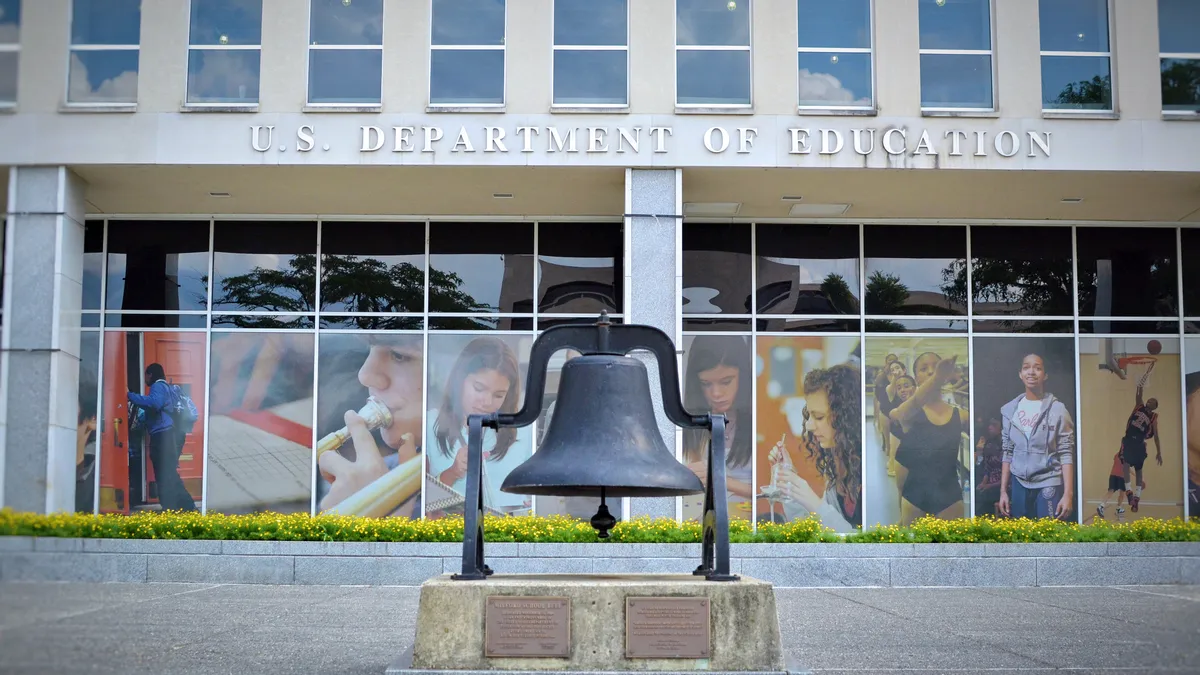Dive Brief:
-
The U.S. Department of Education has announced new details on how it will distribute a $350 million pot of federal coronavirus relief funds among colleges that didn’t initially receive a significant amount of aid.
-
To get their share of the funding, some of the schools will need to submit information to the department about the financial stresses the virus has caused. The new reporting requirements follow criticism the department did not carefully allocate the money.
-
This is the latest update in a months-long saga over the distribution of funding set aside for colleges through the Coronavirus Aid, Relief, and Economic Security (CARES) Act.
Dive Insight:
Of the roughly $14 billion of CARES funding allocated to higher education, about $350 million was earmarked for Education Secretary Betsy DeVos to give to colleges she determines have been substantially disadvantaged by the coronavirus. The law instructs her to prioritize those that didn’t receive at least $500,000 in other CARES aid.
The department said in April it would distribute the funding so all eligible colleges would get at least $500,000. But that meant some small, speciality institutions, such as beauty or faith-based schools, would receive hundreds of thousands more dollars than their initial allocation.
The windfall was much more than some of the schools needed to operate, prompting backlash from some in the industry who argued the funds would better serve other colleges in financially precarious positions.
Now, the department is taking steps to distribute that money. It identified 974 public and private colleges that were still under the $500,000 threshold after most of the other CARES funding was allocated.
More than half those schools — 538 colleges — will need to supply the department with information about their finances when applying for their share of the money, it said in a new missive this month.
The reporting requirement applies to schools whose budgets are already under additional federal scrutiny, have fewer than 100 students, are slated to receive more than $400,000 from the $350 million pot or are due to get an amount that exceeds the federal financial aid they received in the most recent year for which there is public data.
The colleges will need to request a certain amount of money, and give an estimate to the department of their lost revenues and unexpected expenses incurred from the pandemic so far, such as the costs of shifting to remote instruction.
Ben Miller, vice president for postsecondary education at the left-leaning think tank Center for American Progress, wrote on Twitter Wednesday that the department’s new requirements are "better" than its original strategy. Colleges with just a handful of students likely won’t be able to get the entire amount they were allocated, he noted, though he was still critical of the approach.
The Education Department did not respond to an emailed request for comment Friday.









